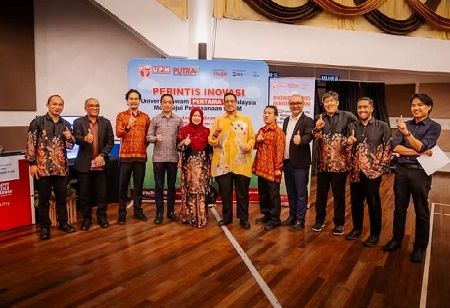Universiti Putra Malaysia Bintulu Campus (UPMKB) has recently introduced the Putra Fiber Service.
This significant achievement makes UPMKB the first public higher education institution in Malaysia and the first in Borneo to implement Ruijie Networks 'Coarse Wavelength Division Multiplexing' (CWDM) technology in its network infrastructure.
The launching of the Putra Fiber project was conducted by UPMKB vice-chancellor Dato’ Profesor Dr Ahmad Farhan Mohd Sadullah.
“The Putra Fiber project, carried out by the Information and Communication Development Centre of UPM, involves the replacement and upgrading of computer network equipment across all residential colleges at the Serdang and Bintulu campuses”, said UPM in a statement.
“The Fiber to The Room (FTTR) pilot network project, based on CWDM optical technology and WiFi-6, aims to deliver optimal performance to meet the rising demand for data through an extensive, high-speed, and stable campus network.
According to UPM, the pilot project was fully completed at Kolej Sri Rajang, UPM Bintulu campus on Nov 29, last year, while Phase 1 at UPM Serdang campus is expected to be completed by end of this month.
With a project value of RM1.9 million, a total of 800 WiFi-6 access points have been installed at Kolej Sri Rajang, UPM Bintulu campus.
The project’s launching has opened up opportunities for strategic collaboration between UPM and Ruijie Networks to further enhance infrastructure and drive digital transformation at UPM and in Sarawak, said the university.
Ruijie Networks, meanwhile, remarked that the UPM’s next-generation Putra Fiber network would bring about a significant digital transformation to the university’s operations and campus connectivity.
The launch event also featured a live demonstration booth showcasing the network’s high-speed connectivity, intelligent Wi-Fi capabilities, and environmentally-friendly infrastructure.
“UPM Campus Bintulu’s FTTR-enabled SOE solution is designed to address critical connectivity challenges, providing a faster, more stable and secure digital experience for students and staff.
“This next-generation infrastructure offers ultra-fast speeds, with 2.5Gbps end-to-end bandwidth, ensuring seamless learning, research, and collaboration”, the statement said.
The sustainable network design incorporates energy-efficient, passive optical technology, lowering maintenance and operational costs while aligning with green initiatives and the drive for digital transformation.

